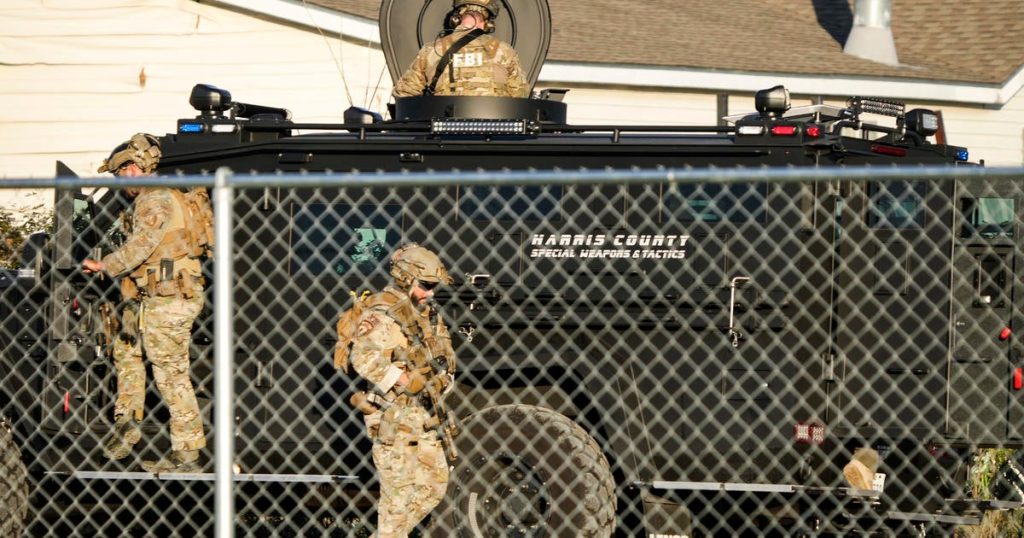Federal investigators discovered bomb-making materials at the Texas home of Shamsud-Din Jabbar, the man responsible for the deadly truck attack on Bourbon Street in New Orleans. Jabbar was a 42-year-old U.S.-born citizen living in Houston. The investigators found these materials, although the specific types are not clear, and then returned the home back to its owner. Jabbar drove from Houston to New Orleans in a rented pickup truck and drove through a crowd of revelers on New Year’s Day, resulting in the deaths of 14 people and injuries to dozens. He was shot dead by the police, and the attack is being investigated as an act of terrorism.
It was revealed that Jabbar had placed two improvised explosive devices (IEDs) along Bourbon Street, which were found in coolers and were active at the time. Law enforcement rendered them safe before any harm could be done. The devices were described as rudimentary pipe bombs containing shrapnel like nails, screws, and tacks. Additionally, Jabbar was wearing body armor at the time of the attack and had two weapons, an AR-15 style weapon, and a handgun. Investigations also included searching the Airbnb where Jabbar stayed in New Orleans, leading to the detonation of concerning materials found there, causing a fire at the location.
The House Homeland Security Committee and other members of Congress were briefed by the FBI on the investigation, confirming that there is no evidence of Jabbar having co-conspirators or being directed by a foreign actor or terrorist organization. However, it was revealed that the attack was inspired by ISIS, with Jabbar posting videos declaring his support for the group just before the violent rampage. An ISIS flag was also attached to the trailer hitch of his vehicle. Federal agencies warned of potential copycat attacks following the endorsed ISIS tactic of vehicle ramming attacks combined with the use of explosives. Concerns were also raised about retaliatory attacks in response to the New Orleans incident.
The discovery of bomb-making materials at Jabbar’s Texas home and the inclusion of improvised explosive devices in the New Orleans attack have raised significant concerns about his intentions and potential for further harm. Jabbar’s actions, inspired by ISIS, have led to fears of similar attacks and the possibility of additional violent incidents. The investigation into this incident continues, with federal agencies working to fully understand the motives and connections behind Jabbar’s actions. Law enforcement efforts are focused on preventing future attacks and ensuring the safety of the public in the face of potential threats.
The use of improvised explosive devices in the attack on Bourbon Street highlights the destructive capabilities of such weapons and the danger they pose to innocent bystanders. The presence of bomb-making materials at Jabbar’s residence suggests premeditation and planning on his part, raising questions about the extent of his preparations and whether he had assistance or support in carrying out his attack. The involvement of federal investigators and law enforcement agencies underscores the seriousness of this incident and the importance of preventing similar acts of violence in the future. Public safety measures and counter-terrorism efforts are being emphasized to address these threats and protect communities from potential harm.
The connection between the New Orleans attack and ISIS ideology underscores the global impact of extremist groups and their ability to incite violence and terror. The FBI’s confirmation of Jabbar’s support for ISIS and the group’s endorsement of vehicle ramming attacks with explosives as tactics further highlight the need for vigilance and proactive measures to combat such threats. The potential for copycat attacks and retaliatory actions underscores the ongoing challenge of maintaining security in the face of evolving threats and radical ideologies. Coordination among law enforcement agencies, intelligence services, and government officials is crucial in addressing these complex and multifaceted challenges to public safety and national security.


